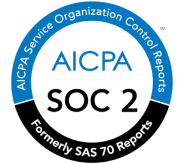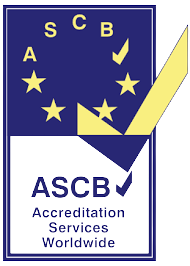Table of Content
Introduction
As per one of the latest Deloitte 2024 reports on Global Human Capital Trends, microcultures are on the rise. Organisations are 1.8 times more likely to outperform their competitors and outsmart themselves as far as micro teams and cultures are concerned. So, it’s high time for the new-age HR managers to learn to build and strengthen microcultures within the organisation for the best possible results.
To be able to do so, HR managers must have the right means and HR tech. That is why uKnowva is there to resolve this paradigm for new-age HR leaders. When you implement our software in your firm, it helps you scale the business and operations even for the micro teams and makes way for nurturing microcultures at every step of the way.
Read how it is done below and find your way into the same strategy when you do uKnowva.
Want to skip the post?

What are microcultures?
Organisations work with different teams as per locations, shift hours, departments, and other demographics. These areas make up the micro teams which recognise each other well and can relate to each other at a personal level. That is where microcultures take place.
Modern organisations are seeing a rise in microcultures because now the human dynamics and expectations at work are constantly changing and evolving. Every human being at work is different with myriads of experiences in life and work.
When two or more people come together at work and find more similarities, that is when a microculture begins to form.
Why are these microcultures essential in a workplace?
Microcultures bring a sense of camaraderie and belonging. People can relate to each other. They do not feel alone anymore, even when working from remote locations. They grow fond of each other, work together in unison and establish an unsaid understanding to get the work done as per the company standards. It removes barriers in the workplace, and corporate communication can be streamlined as well when this connection simmers on the social intranet.
Also, when there is a sense of camaraderie on an ongoing basis, it removes the cost and time invested in training new people at work. Rather, existing employees take equal initiative to welcome new ones and make them feel comfortable and psychologically safe when working even at a growth-oriented company.
In more than one way, microcultures help employees to open up, speak for themselves, have an opinion, and share it without fear in focused groups, discussion forums, or on the timeline of an intranet.
They can develop more skills without actually thinking about intentionally developing those when the microcultures involve high-performers from every department.
What are the ways to build and strengthen microcultures in the workplace?
- Recognise timely wins.
Celebrate every team's win on the intranet. Give them a space and platform to congratulate one another. Every team member will have the right to put out a congratulatory message, like, or comment.
- Build trust within teams.
Handle escalations and communicate with individual teams holding regular scrum calls. Be available to them on the intranet and check their availability on track my team feature on uKnowva. Ensure this feature is available for every team leader to earn the trust of every member without micromanaging them.
- Treat everyone with fairness and respect.
Give equal respect and fair treatment to everyone in the team, irrespective of their experience and expertise. This gives room to all members to connect with each other, despite their seniority or naivety in the organisation.
All this and more is easily doable when your teams are tracking their workflows and daily corporate communication on uKnowva’s intranet.
- Provide elearning opportunities.
Everyone deserves a fair chance to upskill and relearn. Give them that with eLMS technology that we already provide. Different teams forming microcultures in the organisation might have various needs to learn newer concepts and technologies.
A tech team would be interested to learn soft skills and a communication and branding department will be more keen to learn technical skills in comparison. An eLMS will provide the catalogue to upload all such courses for different groups at once.
- Address conflicts proactively.
Be clear to address the conflicts arising between multiple teams or individual team members. Have one agenda in mind, that is, to be on the same page. Every team and team member is part of the organisation, the bigger unit.
Eventually, everyone has to align with one another despite their differences in understanding the business and the process of the work to be done. So, utilise the suggestion box, grievance redressal portal, helpdesks, and feedback forms.
Make sure you address conflicts right on time and move past those to celebrate feats and focus on organisational growth once again as a unit.
- Identify regional holidays in the HR policy.
One of the smartest ways to celebrate, nurture, and bring new microcultures into the organisation is to address and include regional or national holidays in the HR policy. This depends on where your organisation is operating. If it is a global organisation, ensure that you are addressing public holidays for different countries.
If you’re an organisation operating in different states of a country, you need to focus on adding more holidays in the policy as per the regional festivities or state-wise holidays. This will make teams from a particular region feel more included without even having to voice it out in the open for everyone.
- Conduct events and polls for different teams.
Unit different teams using polls and surveys on the intranet. Remember the feeling of having a big family even when everyone is working from different locations (cities, states, or countries).
Otherwise, you can generate polls or surveys for specific groups to get more attention and engagement from them.
- Ensure everyone feels that they are heard and have value.
Leverage the post-sharing feature on the intranet. Allow team members from various groups or departments to share their thoughts on the day. Let them ask for a genuine vote or opinion on the posts.
Let others engage and create an atmosphere of genuine posts, polls, and thoughts. This will help people to mature along the way and have better mindsets and thoughts in place, even if they are from different groups and teams. At least they know that people are ready to comment, like, and view their posts. It means each one of them holds greater value and equity, even while working from numerous locations or shift hours.
- Update company policy regularly and share with all.
Keep updating your company policy as per the state and national standards. If it is a global company, ensure your compliance with international standards and guidelines when the time is right.
Observe the trend of your employee sentiments with the Happiness Meter. Incorporate the insights from there and the employee satisfaction survey from the intranet in the HR policy.
This is a strategic initiative to include everyone you’re hiring in the policy and make everyone feel psychologically safe when operating for the business and bringing in more results for the firm.
That is definitely one of the greatest ways to celebrate, nurture, and understand microcultures at a deeper level in your organisation for significant growth on all fronts.
Conclusion
I hope you got a greater glance at how you can build and strengthen microcultures in your organisation. For that, you definitely need emotionally intelligent, anywhere accessible, highly flexible, and feature-rich HRMS software.
We are that solution for you to address concerns at first sight and ensure to create a safe, harmonious, and heterogeneous environment for all while introducing more DEIB initiatives on the go.
FAQs on Microcultures in an Organisation
How long does it take to build a strong microculture in the workplace?
Building a robust microculture varies, but with consistent efforts, positive changes can be observed within a few months.
Are microcultures relevant in remote work settings?
Absolutely. Remote work environments can benefit from strong microcultures, emphasising communication and connection.
Should microcultures be uniform across different teams within an organisation?
While core values may align, allowing for some diversity in microcultures fosters innovation and adaptability.
How can leadership promote diversity within microcultures?
Leaders can actively support diversity by fostering an inclusive environment, promoting diverse voices, and implementing fair policies.
Can conflicts within microcultures be beneficial?
Constructive conflicts can lead to growth. Addressing conflicts promptly and respectfully can strengthen microcultures.
Is technology a threat to traditional microcultures?
When used strategically, technology enhances microcultures by facilitating communication, collaboration, and efficiency.












